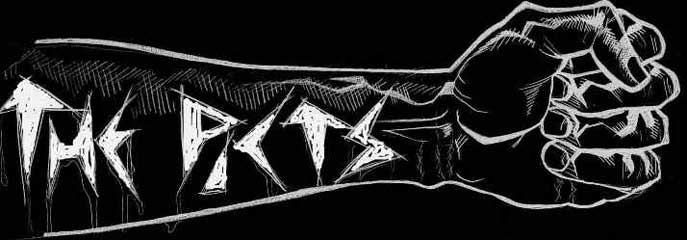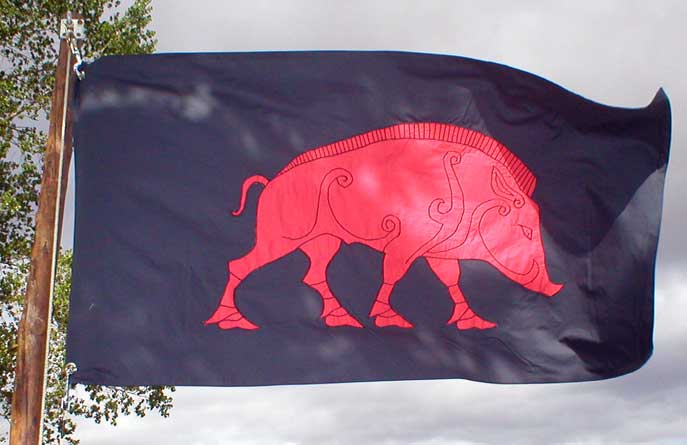|
||||||||
 |
What is not often made accessible for scrutiny though, is the actual history of the Picts and their kings, and the reason for this is not very hard to find. Pictish history as a subject per se practically doesn’t exist. As will become clear within these pages, we have absolutely no written records that were penned by the Picts themselves. Such few records that we do have were made by the historians of other Nations whose opinions on matters concerning the Picts were often quite inimical. Nevertheless, whatever its source, it is a history of sorts which deserves to be told, and that is the prima facie reason for my little book. The ulterior reason for its existence is that I believe we should be encouraging the Scots of today to learn more of themselves and their cultural roots. Today’s average young Scot is, to be frank, abysmally ignorant of his own country’s accomplishments and the people and culture from which those accomplishments sprang. Place him or her in a situation where general knowledge, science or the arts are put to the test with contestants from other countries and more often than not the result will be, if not an outright win over his or her peers, then an admirable close second. Repeat the test, using this time awareness of one’s own culture, and the results could hardly be more dissimilar. The foreign students will inevitably win hands down. Intelligence is obviously not a factor to be considered here; the problem is simply that the Scots are not being taught about themselves and we ought, perhaps, to ask why this situation should exist. As to the risks inherent in this lack of knowledge however, let me relate a little story that will hopefully provide a perfect example of how better familiarity with their own cultural roots is so badly needed by many Scots. Some years ago, I fell into conversation with a mechanic who was repairing my car. When he discovered that I was a traditional stone carver he became quite enlivened and told me that he had in his possession a piece of stone that I might be interested in seeing. It had been found many years ago by his father, now deceased. The stone was described as being approximately one foot square (300mm. sq.) with unusual carvings on it, and, in the mechanic’s own words, “There are funny looking grooves all along one side; kind of like Roman numerals but not Roman numerals", I couldn’t believe my luck. It looked as if I was going to be shown a piece of stone carved with what, according to the chap’s description, were Pictish symbols and some Ogam script. He had no idea what Ogam script was but became fairly excited when I explained it to him so he invited me along to his house that evening to have a look at the stone and give my opinion as to what it was; Pictish or whatever. |
 |
We searched the shed where it was supposed to be lying. No luck. We then searched the big cupboard under the stairs. Still no luck. After looking throughout the whole house the lad eventually gave up and it dawned on him that it had probably been thrown out the last time he and his family, (lovely people incidentally), had moved house and the stone’s present whereabouts were therefore quite unknown. Whose fault is it things like this happen? Certainly not the mechanic’s. He merely believed that he had in his possession a stone with “funny markings” on it and his dismay when it was explained to him what it might have been, and what he may have lost, was quite palpable. No. The fault lies fairly and squarely with the educational system in this country, where our children appear to be taught that every culture beyond Scotland’s is admirable and superior and that almost everything about Scottish culture is second rate and not really worth knowing about, far less learning. I yearn for a day when Scottish children have a pride in their own culture, when history lessons in Scottish schools are given from a Scottish perspective instead of a north British one, and when every school child in Scotland knows at the very least what Ogam script is and who the Picts really were. Perhaps then tales like that of the mechanic and his lost stone with its ‘funny marks’ will become a thing of the past. This book is aimed at the intelligent general reader, but it is expected that there will be enough scholastic speculation within its pages to stimulate the mind of even the most erudite of academics. Hopefully too, sufficient adventures of the Pictish Warlords to ignite a spark of imagination within the minds of our school children, encouraging them to enquire further into the story of our ancestors. For myself, I believe that I have been as diligent and careful as is humanly possible in all the research I have undertaken in writing this book. I have truly burned the midnight-low-cost energy saving light bulb. I therefore trust that the reader will be generous and warm hearted enough to make allowances for those few mistakes, if any, that have slipped through my fingers onto the page, and I will be glad to have them pointed out to me. For any of those frightful little imps and horrors that may be found lurking within, (and I honestly do not anticipate them), I sincerely apologise. With regard to what foreign contemporary writers said of the Picts, let me add, in closing, a quotation from a Spanish born Roman scholar. This particular gentleman was writing at just about the same time as Agricola and his army were marching into Caledonia, presumably bringing north to the natives who lived there the ‘benefits’ of |
The ‘Pax Romana’. The reader should not at once persuade himself that all things that even the best writers have said are absolutely perfect. |
Quintilian.c.30 A.D.-c. 100A.D |
REX PICTORUM |
Back to Top
Return to Paisley T. A. website
© Ron Henderson 2008-09
